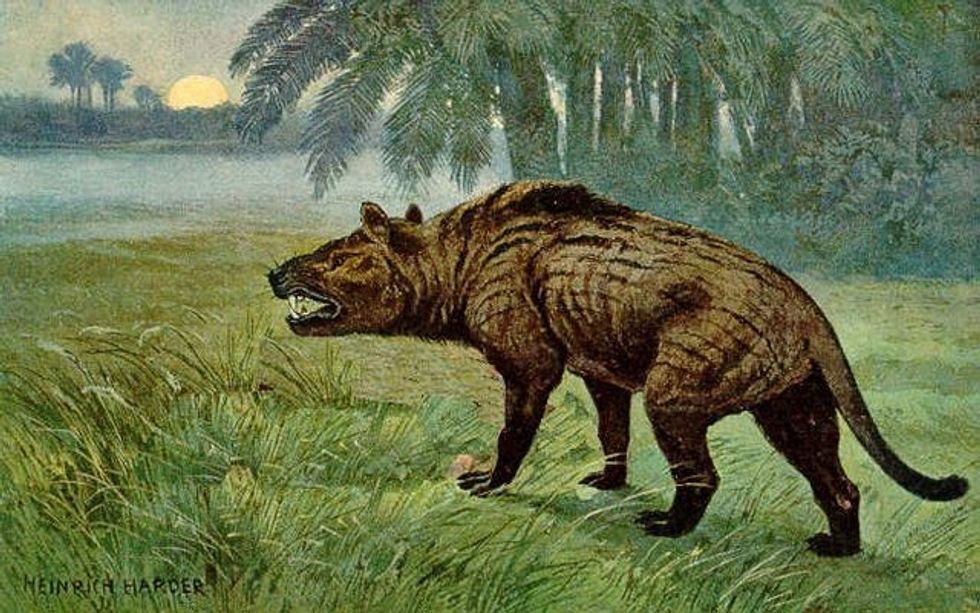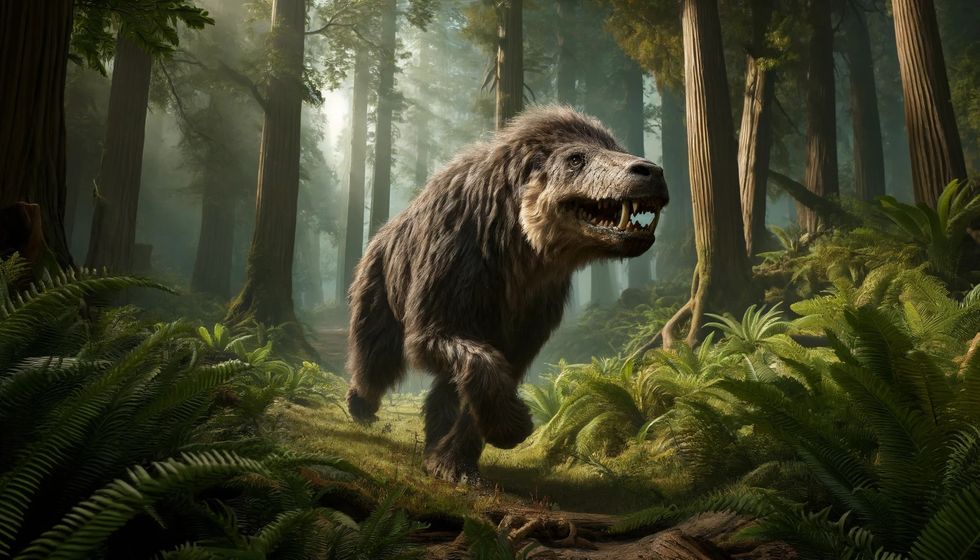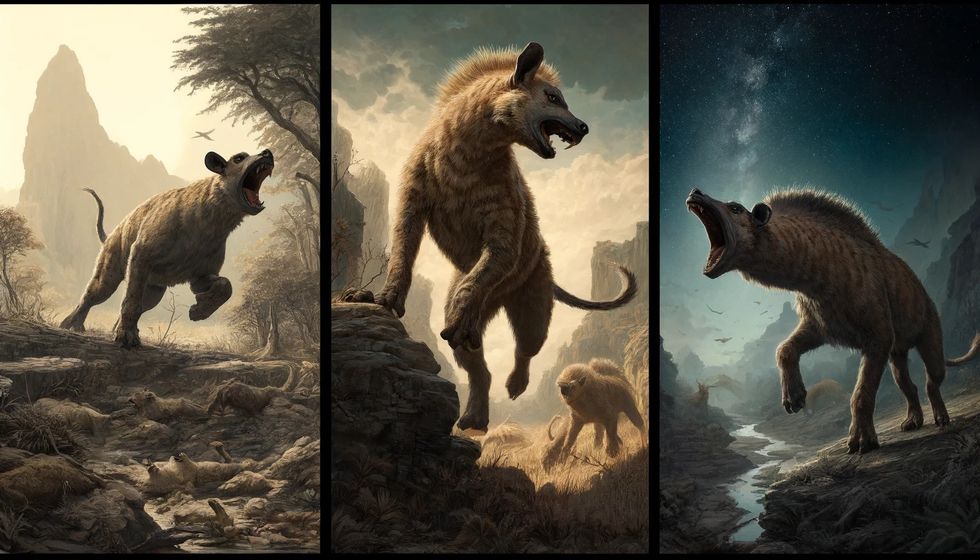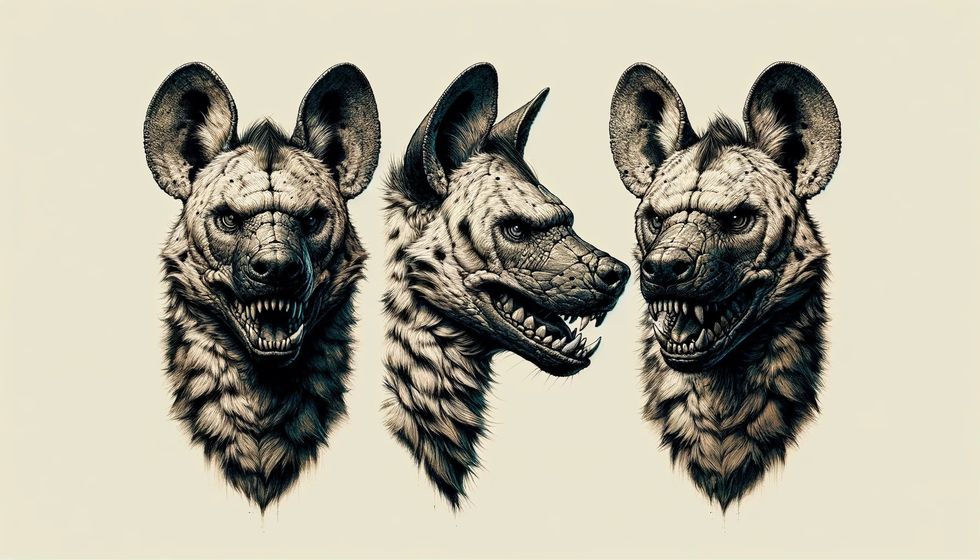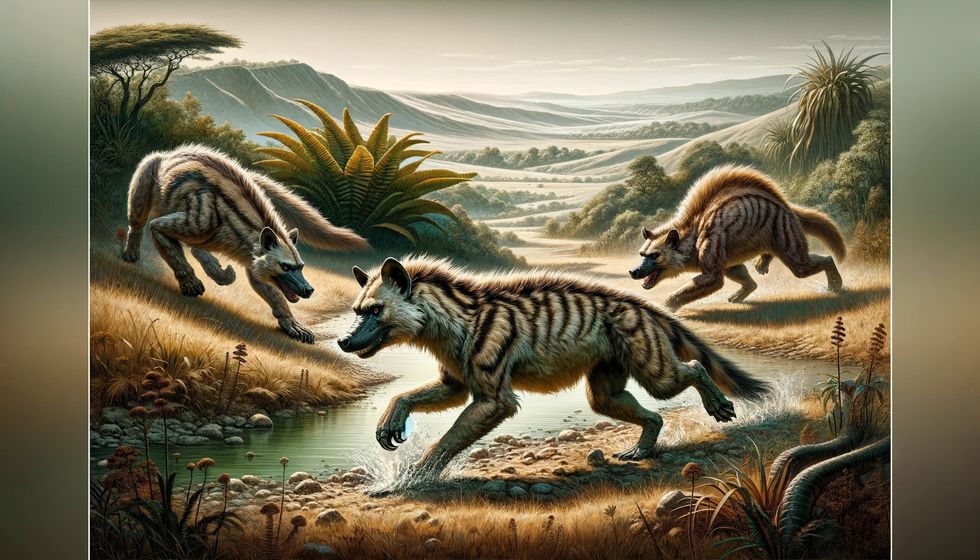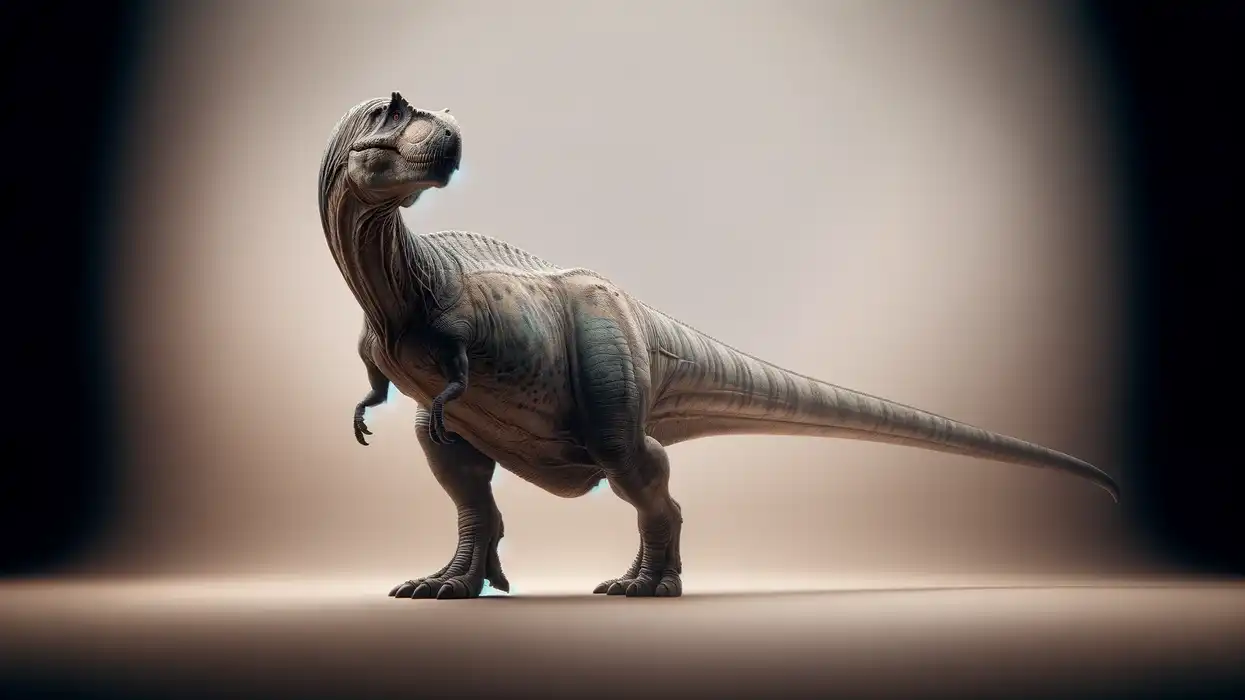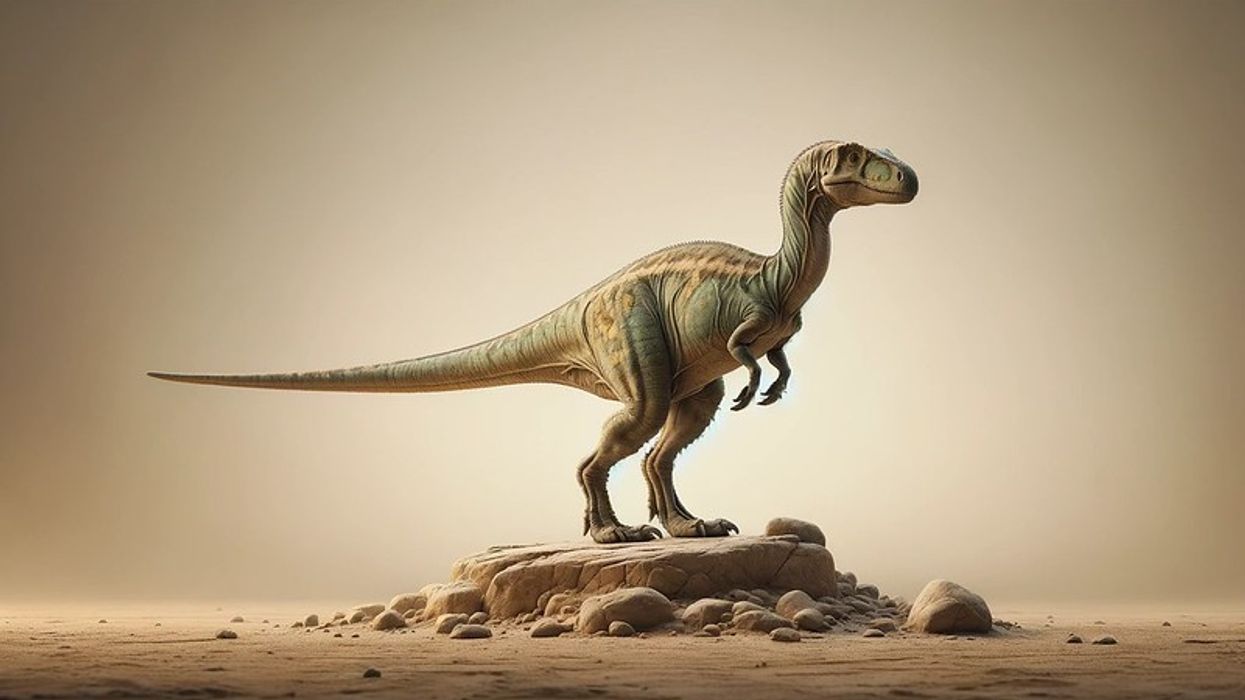Hyaenodon was a fascinating animal, with some cool features that made it stand out from the crowd. It might remind you of today's laughing hyenas, but it's an extinct predator that used to roam the Earth.
This creature was one of the top hunters of its time, famous for its super-sharp teeth, which were perfect for slicing through its dinner. It was part of the family Hyaenodontidae, which is completely different from any carnivorous mammals you know now.
In this article, you'll learn some amazing Hyaenodon facts that will captivate you. From its size and appearance to its hunting habits, get ready to go back in time and meet one of the most intriguing prehistoric mammals, whose larger forms once dominated the Earth!
Hyaenodon Interesting Facts

How do you pronounce 'Hyaenodon'?
Hyaenodon is pronounced as 'High-ee-no-don'.
What type of dinosaur was it?
Even though it might sound like one, a Hyaenodon was not a dinosaur! It was a meat-eating creature called a creodont. Hyaenodon was part of a group of animals that ate meat like today's lions and tigers do, but it wasn't related to them.
In which geological period did this creodont roam the Earth?
The Hyaenodon first appeared during the Eocene Epoch (about 42 million years ago) and lived until near the end of the Oligocene Epoch (about 25 million years ago). This long-lost creature roamed the Earth for millions of years before disappearing.
When did the Hyaenodon become extinct?
Hyaenodon became extinct at the end of the Oligocene Epoch (approximately 25 million years ago).
Where did this creodont live?
Fossils of the Hyaenodon have been found in many places around the world, including North America (especially in North Dakota and South Dakota), Europe, and Asia.
What was their habitat?

The Hyaenodon was quite the traveler! This species lived all over the world and came in many different types. It could make a home in many places, from leafy woodlands and wide-open plains to dry, semi-arid areas.
Who did they live with?
It is uncertain if Hyaenodons hunted alone or lived in groups because scientists are still trying to figure that out. As researchers keep digging and learning more about these ancient creatures, you might soon find out more about how they lived, together or apart.
How long did this creodont live?
Right now, scientists don't know how long Hyaenodons lived because they need to study their fossils more to figure it out. Maybe with more research, you'll learn about their lifespan in the future!
How did they reproduce?
The Hyaenodon was a mammal, so it gave birth to live babies instead of laying eggs.
Hyaenodon Fun Facts
What did they look like?

The Hyaenodon had a really big head with a small brain, which is something many early meat-eating mammals had. It had a long skull with a skinny snout that was longer than today's meat-eaters, like wolves.
These ancient creatures also had slim bodies, a sturdy neck, and a strong body that ended in long tails. Their slicing teeth were sharp and perfect for cutting meat, but not so much for crushing bones.
How many bones did a Hyaenodon have?
All the details about the Hyaenodon's skeleton are not known yet. Scientists are still studying it and hope to learn more about its body structure soon.
How did they communicate?
How Hyaenodons talked to each other or if they had special ways of communicating is currently not common knowledge. Scientists are still looking into it to learn how these prehistoric creatures might have interacted.
How big was the Hyaenodon?
The biggest species of the Hyaenodon, called Hyaenodon gigas (H. gigas), was huge, over 10 ft (3 m) long and about 110 cm (1100 mm) high at the shoulder.
On the other hand, the smallest kind, known as Hyaenodon microdon, was much tinier, measuring only about 40–50 cm (400–500 mm) in length.
How fast could this creodont move?
It is still uncertain how fast Hyaenodons could run. Scientists are still studying them to find out if they were quick enough to outrun other predators or catch their prey easily in their natural environment.
How much did a Hyaenodon weigh?
The Hyaenodon genus had different sizes, showing how they adapted to live in different places around the world. For example, one of the largest North American species, called Hyaenodon horridus, usually weighed about 88 lb (40 kg), but sometimes they could be as heavy as 130 lb (60 kg).
The absolute giant of the family was the Hyaenodon gigas, which could weigh a whopping 833 lb (378 kg) and grow up to 10 ft (3 m). On the smaller side, there was the Hyaenodon crucians from the Early Oligocene of North America, which weighed between 22–55 lb (10–25 kg).
Even smaller were species like Hyaenodon microdon and Hyaenodon mustelinus from the Late Eocene (37.8-33.9 million years ago), each weighing around 11 lb (5 kg). This shows just how varied these ancient creatures were in size.
What were the male and female names of the species?
In the fossil records, there are no special names given to male and female Hyaenodons; they are all just called Hyaenodons.
What would you call a baby Hyaenodon?
Young Hyaenodons might be called 'cubs', just like the babies of many other meat-eating mammals.
How aggressive were they?
Hyaenodons might have been quite tough creatures, as their strong bone-crushing skills suggest they could be aggressive. However, it is not known how fierce they were when hunting or if they were territorial, because that information hasn't been found yet.
Scientists are hoping to learn more about their behavior through future research.
Did You Know…

Hyaenodon species were top predators in their environments until the Miocene Era (23.03-5.33 million years ago) in Asia. They competed for food with similar creatures, including other types of Hyaenodonts like Sinopa and Hyainailurus.
Their diet was varied and included primitive horses like Mesohippus, as well as large mammals such as Brontotheres, early camels, oreodonts, and even ancient rhinoceroses.
Even though the name Hyaenodon means 'hyena tooth,' these animals only resemble modern hyenas in the sense that both are meat-eaters and mammals. Unlike hyenas which are more closely related to cats, Hyaenodons belonged to an ancient group called creodonts, which no longer exists.
Did you know that a long time ago, a group of cool creatures called Protohyaenodon roamed the earth? They were part of the bigger Hyaenodon family. In 1933, a scientist named Stock found out that these creatures had a few different types.
One of the Protohyaenodon, called Hyaenodon brevirostrus, which another scientist named Macdonald studied in 1970, was one of the last ones living in North America before they disappeared during the Late Oligocene Period.
Another small but interesting member was Hyaenodon crucians, discovered way back in 1853 by Leidy. There were more small ones like Hyaenodon microdon and Hyaenodon venturae, identified by Mellett in 1977.
And not to forget, Hyaenodon mustelinus, found by Scott in 1894, roamed North America from about 38 to 30 million years ago. The family also included Hyaenodon raineyi, added to the mix by Gustafson in 1986. Isn’t it fascinating how many different types there were?
FAQs
What makes Hyaenodon interesting?
The Hyaenodon was one of the superstar predators back in its day, roaming far and wide across different parts of the world. Learning about the Hyaenodon helps you understand the world of ancient animals and how today's meat-eaters came to be. It's like piecing together a giant, prehistoric puzzle!
What are the major differences between the Hyaenodon and the modern hyena?
The Hyaenodon had a long, sleek skull and razor-sharp teeth perfect for slicing through meat, with mighty canines for grabbing onto its next meal.
Unlike the Hyaenodon, today's hyenas have a shorter, sturdier skull with tough teeth designed to crush bones. This comes in handy for munching on the leftovers from other animals’ dinners, fitting their scavenger lifestyle.
Imagine a creature that can be as small as a house cat or as big as a lion. That’s how varied Hyaenodons were in size! The largest, like the Hyaenodon gigas, could stand toe-to-toe with the big cats seen in the wild today.
On the flip side, modern hyenas are more similar in size to each other. Take the spotted hyena, for example, which typically tips the scales at 89-180 lb (40-82 kg) and stretches about 38-65 in (96.5-165.1 cm) long.
Back in the day, Hyaenodons were part of a group called Creodonta, and later they were reclassified to Hyaenodonta. They’re different from the carnivores you know today.
Meanwhile, modern hyenas are part of the Carnivora order, making them distant cousins of cats and civets. They're nothing like the ancient creodonts!
Why did Hyaenodon go extinct?
It's a bit of a mystery why Hyaenodons aren't around anymore. Scientists think a few things might have caused them to go extinct, like changes in the climate, losing their homes, having to compete with other animals for food, and not having enough of their usual prey to eat.
More research might help provide details on exactly why these fascinating creatures disappeared from the planet.
The Hyaenodon is a really interesting chapter in the big book of vertebrate evolution and natural history. These carnivorous creatures, with unique characteristics, were not like today’s hyenas at all. They were fierce predators that made a home for themselves in the wild landscapes of ancient Earth.
Scientists have found a lot about Hyaenodon in fossils, and they are written about in publications like the Los Angeles County Museum Of Natural History Bulletin. By studying the bones of the North American Hyaenodon, researchers can learn what the animal was like and make a comparison with other carnivores living on Earth today.
Related Articles Around the Web


